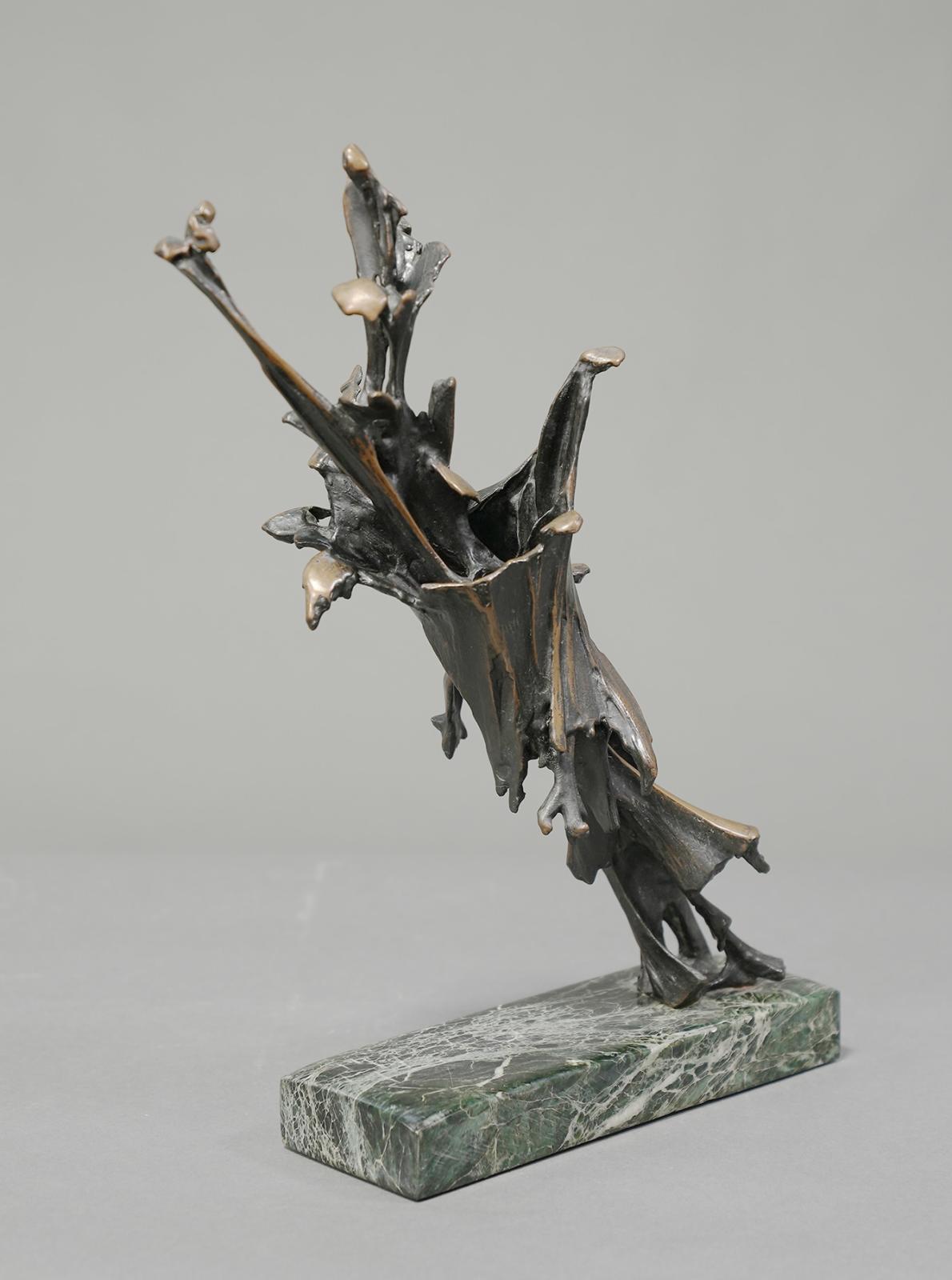artist
Fluid, dynamic, and energetic best describe the work of American sculptor Robert Cook. Cook’s impressive ability to capture motion in his bronze forms is created by lost wax casting, or cire perdue. This distinctive and intricate technique is translated into aesthetically captivating and mind-provoking sculptures.
The New York Times critic Stuart Preston once claimed,
“Cleverness and absolute assurance of technique and overall design identify Robert Cook’s new semi-abstract metal sculpture. He tackles the kind of subject matter, massed figures and animals in motion, that would seem to be intractable to a sculptural treatment. He succeeds in this attempt by re-introducing subjects to skeletal lines of force, somewhat in the manner of futurism”.
The exhibition will feature twenty-one of Robert Cook’s most intriguing works. Among them are Gaiety, whose lively and spirited forms create positive and negative space and almost mimic a graceful, choreographed dance; Pan 1, a portrayal of the purely natural interaction of human and animal in a circular shape that reflects the cycles of life and death; Five Senses, which further embodies the theme of “Circles and Cycles” in Cook’s work and has a mythological and even eerie presence; and finally Virasat Curved, which demonstrates a juxtaposition between the inherently fluid essence of movement and its physical translation into geometric, rigid body structures that are fixed in time. These four sculptures alone reveal the true versatility of Cook’s work, not only in terms of size and subject matter, but also with regards to his unique and cerebral artistic rhetoric.
Over the years Robert Cook’s innovative mind and skillful practice have allowed him to forge a successful lifetime career in the world of sculpture. He has studied in Boston, Paris, and Rome, and boasts an impressive list of achievements, such as grants from the Tiffany Foundation, the American Academy of Arts and Letters, and the Fulbright Commission. Cook’s work has been widely exhibited across the globe, both in similar one-man shows and in public spaces as well. Dinoceras, for example, was first installed in 1971 in a Park Avenue plaza in New York City. Striking and massive, the 20-foot-long sculpture has a commanding presence and demonstrates Cook’s signature forms, which are enveloped in a flowing movement that is both sophisticated and primitive.













